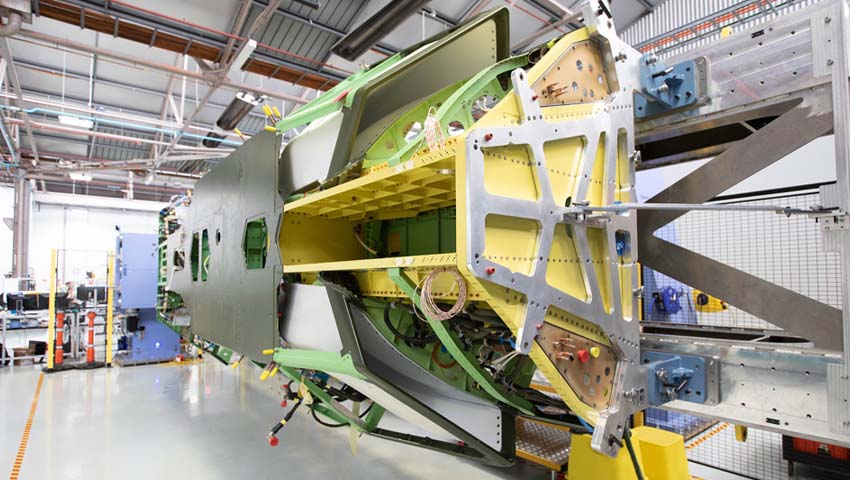Boeing Australia has confirmed the completion of the first major fuselage structural assembly for the company’s first Loyal Wingman unmanned aerial system.
To continue reading the rest of this article, please log in.
Create free account to get unlimited news articles and more!
The aircraft is one of three prototypes that will be developed as part of the Loyal Wingman-Advanced Development Program in partnership with the Royal Australian Air Force.
The Australian team has applied digital engineering and advanced composite materials to achieve cost and agility goals for the 38-foot (11.7-metre) aircraft, which is designed to use artificial intelligence in teaming with other manned and unmanned platforms.
Dr Shane Arnott, program director, Boeing Airpower Teaming System (ATS), welcomed the milestone, saying, “This is an exciting milestone for the development program and the Australian aerospace industry as we progress with production of the first military aircraft to be developed in Australia in more than 50 years.”
Arnott said Australian industry participation had been critical to the program’s rapid development, with a 16-strong Australian industry team making key deliveries to date, including:
- BAE Systems Australia, who has delivered hardware kits, including flight control computers and navigation equipment;
- RUAG Australia, who has delivered the landing gear system;
- Ferra Engineering, who has delivered precision machine components and sub-assemblies to support the program; and
- AME Systems, who has delivered wiring looms to support the vehicle.
Air Commodore Darren Goldie, RAAF Director General of Air Combat Capability, added, “The partnership with Boeing is key to building our understanding of not just the operational implications for these sorts of vehicles, but also making us a smart customer as we consider options for manned-unmanned teaming in the coming decade.”
The first Loyal Wingman prototype will provide key lessons towards production of the ATS, which Boeing Australia is developing for the global defence market. Customers will be able to tailor ATS sensors and systems based on their own defence and industrial objectives.
“Boeing is progressing very well with its development, and we look forward to seeing the final product in the coming months,” AIRCDRE Goldie added.
The next major milestone will be weight on wheels, when the fuselage structure moves from the assembly jig to the aircraft’s own landing gear to continue systems installation and functional testing. The aircraft is expected to complete its first flight this year.
BAE Systems Australia chief executive Gabby Costigan echoed the sentiments of Arnott and AIRCDRE Goldie, stating, “BAE Systems Australia is proud to be working with Boeing in Australia to bring a new defence capability to life – one that offers enormous potential for the RAAF as well as future export markets.”
BAE Systems Australia is a key program partner providing the unmanned flight vehicle management solution, flight vehicle simulation capability as well as delivering flight control computers and navigation equipment. The integration of these, along with Boeing’s autonomous mission systems, brings together the two leading Australian companies in this technology area.
Earlier versions of the technologies used for this project have already supported Australian and UK Autonomy programs such as Taranis, Mantis and Kingfisher UAS demonstrators. More recently, they have been integrated in some M113 armoured vehicles in support of the Australian Army Robotics ad Autonomy Strategy activities.
Autonomous technologies will support soldier responsiveness in an accelerating warfare environment – increasing their ability to outpace, outmanoeuvre and out-think conventional and unconventional threats.

 Login
Login







